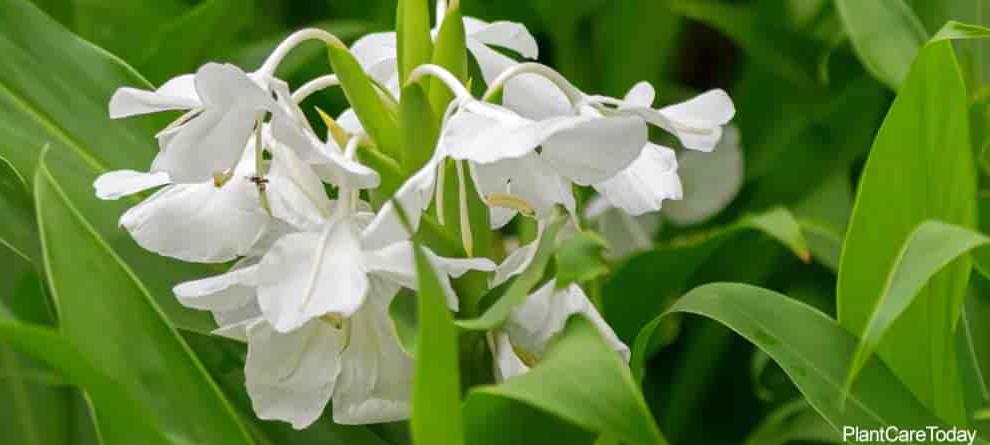White Ginger Lily or white garland lily is a flowering plant that is perennial and belongs to the Zingiberaceae family. The average growth of this flower ranges from 1-2.5 m.
Origin: Fragrant garland lily is a native Asia’s forest know as understorey.
Also grown In: Other Regions of the world where Indian garland flowers are grown includes Central America, Southeast USA, Australia and islands that possess hot climates.
Common Names: There are various other names for Ginger lily such as:
- Fragrant garland flower
- Butterfly ginger lily
- Indian garland flower
- White ginger
Scientific Name: Hedychium coronarium is its scientific name.Species: H. coronarium is the species of Ginger lily.
Family: Zingiberaceae
Order: Zingiberales
Genus:Hedychium
Features: These flowers have interesting features
- Ginger lily is showy.
- It is known as the plant of merit
- These are fragrant flowers.
Plant Type: The plant type of butterfly lily is Perennials
Light:These flowers need direct sunlight for approximately 6-8 hours.
Partial shades are also needs for healthy growth.
Tips To Grow: Ginger lilies love to grow sunlight and partial shades. The soil for these flowers should have proper drainage. This flowering plant also requires average water. It is wise to sow the seeds of these flowers inside and then transplant them outside.
Medical Uses: There are various benefits of ginger lily for all human beings.
- It is digestive, vasodilator and stomachic.
- These flowers are beneficial to cure halitosis, nausea, hiccups.
- Ginger lily can help to overcome diminished appetite.
- For local inflammation, it is best and reliable.
Frequently Asked Question:
Is fertilizer is crucial for butterfly lily?
Ginger lilies grow well if they are facilitated with fertilizer. To spread the nutrients all over the soil water just after fertilizing it.
Does white ginger have a fragrance?
White ginger flowers possess a pleasant and sweet scent. And significantly used to make appealing perfumes.
Are ginger lilies toxic to living organisms?
Yes, these flowers are slightly toxic for all living organisms.

